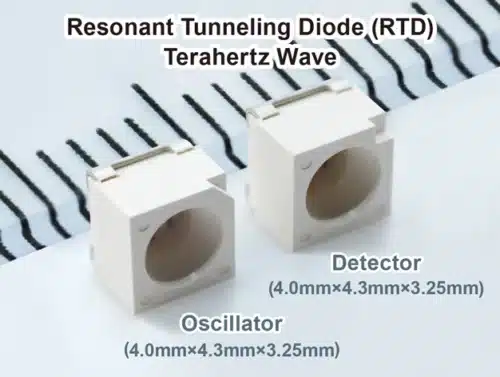The terahertz wave devices for testing, imaging, and communication have smaller sizes and no need for cooling in different environments.

ROHM has launched its smallest terahertz (THz) wave oscillation and detection devices, using resonance tuning diodes (RTDs). These devices have potential applications in non-destructive testing, medical imaging, sensing, and future ultra-fast communication technologies. The company aims to support advancements in terahertz wave applications by providing these devices.
The RTD chip, measuring just 0.5mm × 0.5mm, can generate and detect terahertz waves at a frequency of 320GHz with an output power of 10–20µW. The chip is mounted in a compact PLCC package commonly used for LEDs. This innovation, significantly smaller than conventional oscillators, enables terahertz wave application development in space-constrained environments.
When the antenna surfaces of the oscillation and detection devices are positioned 10mm apart, a dynamic range of 40dB can be achieved. The oscillator and detector consume 10mW of power and operate at room temperature, eliminating the need for cooling equipment. These compact, energy-efficient devices are highly reliable and adaptable to various operating environments.
Ken Nakahara, General Manager of Center, ROHM Research & Development Center, ROHM Co., Ltd. “The terahertz (THz) R&D team and I are very excited and proud to have reached the point where we can bring this technology to market. We have dedicated ourselves to THz devices for about 15 years; the journey has not been easy. We gathered the forces of industry, academia, and government along the way and have successfully established the position that ROHM holds today. The team understands that this announcement is just a small step toward the commercialization of THz technology, but at the same time, it is a giant leap for us. We believe that this small beginning will grow big and contribute to the well-being of our society.”







